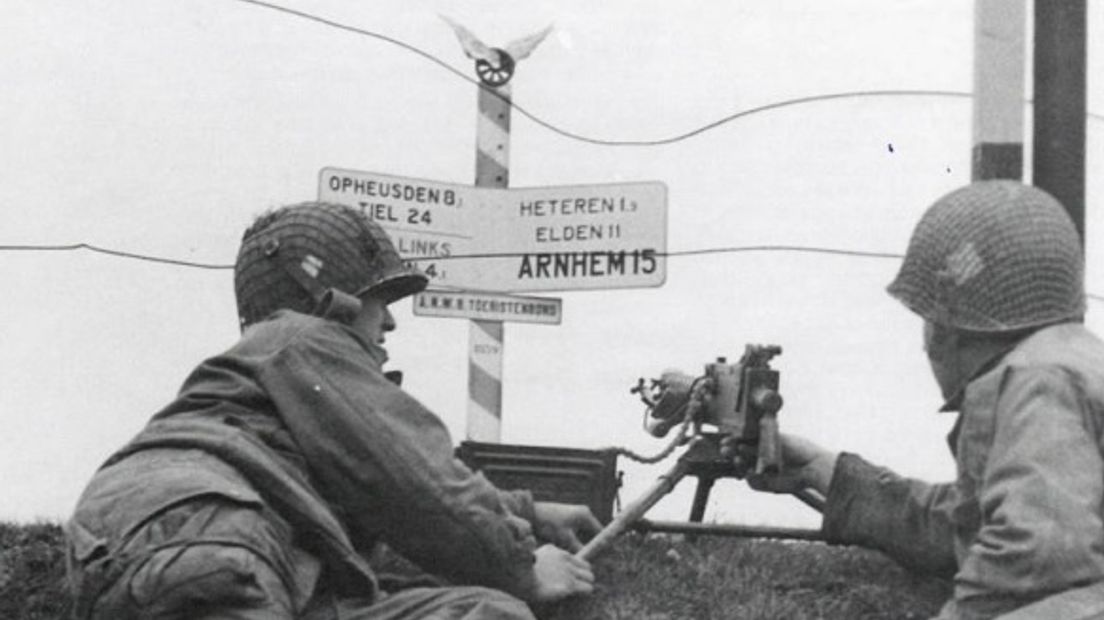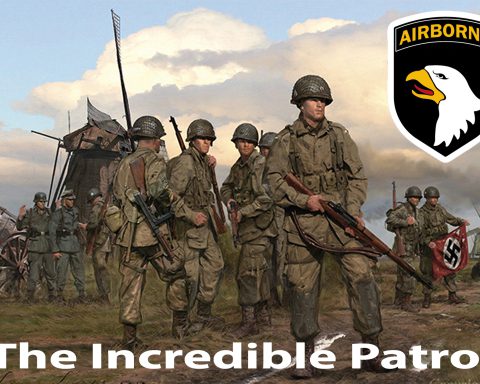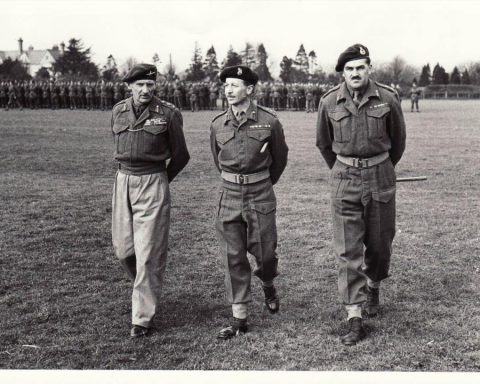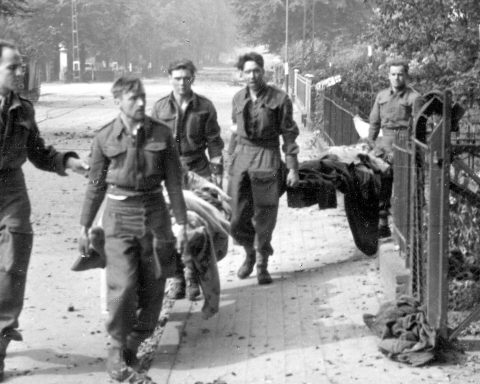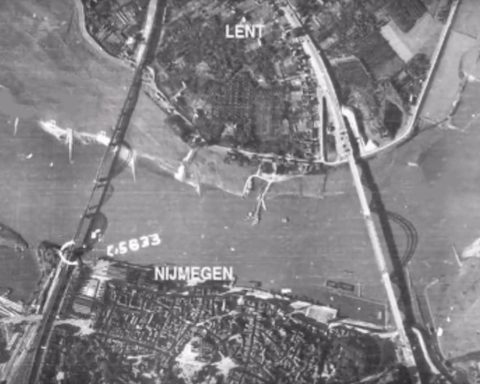ARNHEM – It is a bizarre story, but it is true. A month after the end of Market Garden, six American soldiers were ordered to take two German prisoners of war north of the Rhine. The patrol returned a day later with 32 German prisoners of war.
(By: Patrick Arink)
The bizarre exploration took place at the end of October 1944, but we start the story a month earlier at the end of the Battle of Arnhem. The Battle of Arnhem officially ended on September 25, 1944 with the retreat of the British airborne division across the Rhine. However, the end of the Battle of Arnhem did not mean the end of the fighting. There was heavy fighting in the Arnhem region for months.
The most famous battle in the autumn of 1944 took place between Heteren and Randwijk. The American 101st Airborne Division was moved here in early October 1944 to defend “The Island”. The Island was the name the Americans gave to the area between the Waal and the Lower Rhine.
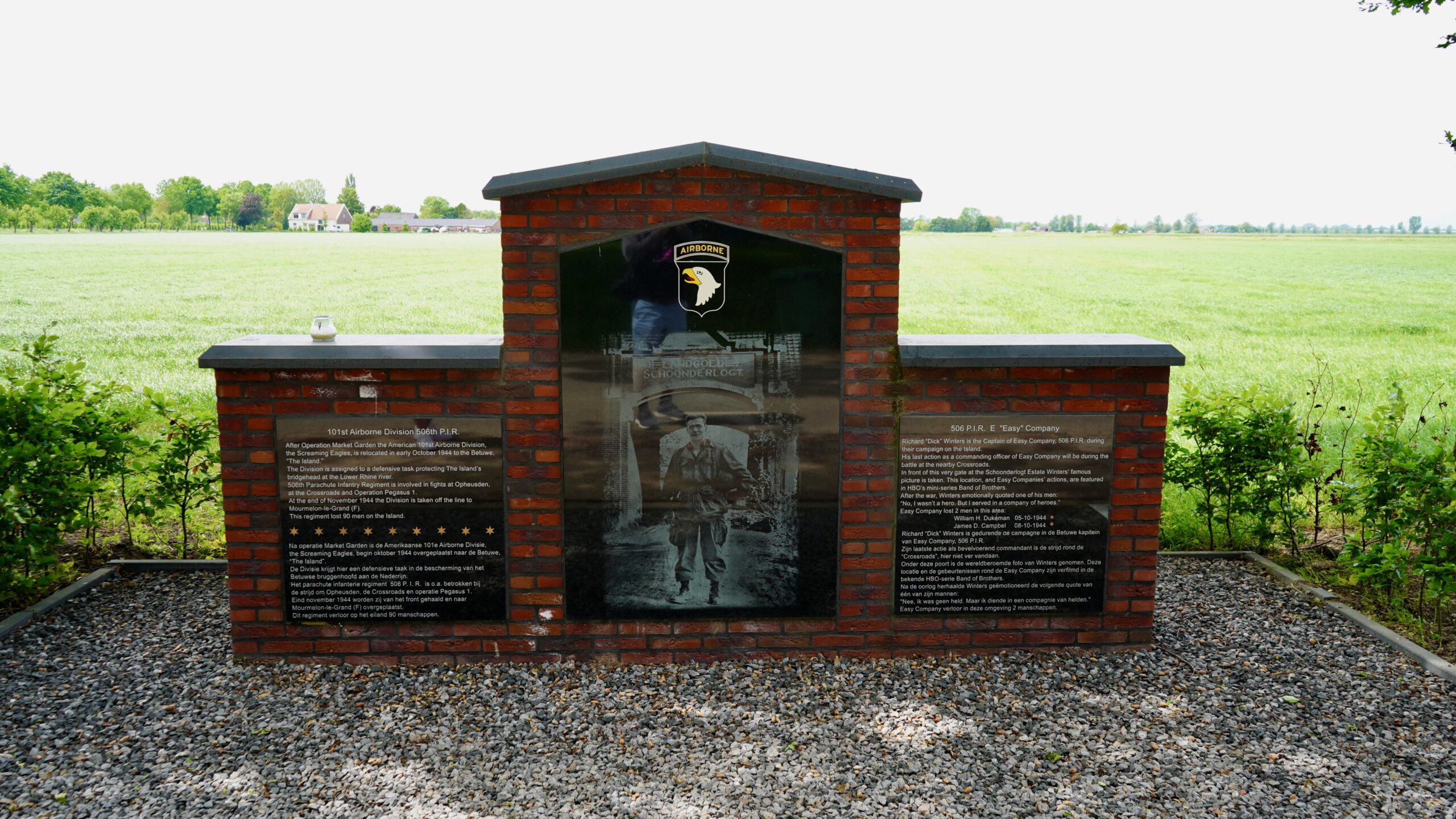
Dick Winters attacks
On October 5, 1944, a patrol of the division’s 501st Parachute Infantry Regiment unexpectedly encountered 300 German soldiers near Heteren who had just crossed the Rhine from Renkum. The attack features prominently in the TV series Band of Brothers.
Major Dick Winters and a patrol of about fifty soldiers had just neutralized a German position south of the river when he was fired upon by German troops a little further away.
Winters: “We couldn’t stay where we were and I refused to withdraw. So I decided to attack. Giving the initiative to the enemy was indefensible for me.”
The Germans were 200 meters away behind a dike. How many Germans were involved was a mystery, but Winters ordered his men to place a bayonet on their rifle and run forward under the cover of smoke grenades.
Major Winters himself was the first to reach the dike.
Winters: “Good God! Just in front of me was a sentry looking out. To his right lay a massive mass of infantry, all huddled behind the dike in their thick long winter coats. The sentry was only three or four yards away. After all these years I can still see him smiling at me as I stood on top of the dike. There was no need to aim fire. I just shot from the hip.”
After Dick Winters killed the sentry, he simply turned to his right and fired at the soldiers lying there.
“I immediately shot the first clip of eight bullets. I could now see that some Germans were throwing their guns against their shoulders to shoot at me, but most of the soldiers just ran away.”
Winters had now received reinforcements from the rest of the patrol. It became a massacre.
“I estimate the number of enemy casualties at fifty killed, eleven captured and countless wounded. I have no idea how we survived. We have been extremely lucky. We probably had to deal with more than 300 Germans.”

Taking prisoners of war
The battle on the dike at Heteren was a clear warning to the Americans that the Germans did not intend to accept defeat. That was also the signal given by British soldiers who escaped to Allied lines during Operation Pegasus on October 23, 1944.
The Americans wanted to know what the Germans were planning to do. The headquarters of the 101st Airborne Division had therefore already given orders several times to take a few German prisoners of war on the north side of the Rhine in order to interrogate them.
As an intelligence officer, Lieutenant Hugo Sims had already ordered several battalions to carry out such a patrol, but that had not yielded any results.
Sims: “Soldiers who were sent on patrol wondered why they had to risk their lives. There was a strong feeling that these patrols were unnecessary. One of the patrols even punched holes in the rubber boats used to cross the river, forcing the patrol to be called off.”
Sims decided to set up a patrol to the north of the Rhine to capture two German soldiers. Sims was determined to show how it was done:
You cross the river at night. You sneak through the German lines in the dark. During the day you hide in a house that functions as an observation post. You report enemy traffic by radio. You take a few prisoners and return in the dark a day later.
How hard can it be!
Sims had selected a house on aerial photographs along the Arnhemseweg, eight kilometers west of Arnhem. That house could serve as an observation post. And with a bit of luck, a few German soldiers also camped there, so he immediately had two prisoners of war.
Sims chose four volunteers from his own intelligence unit to go on the road with him. The team was supplemented by Sergeant Peter Frank. Frank was born in Austria and spoke fluent German. Sergeant Frank knew nothing about reconnaissance, but was happy for the opportunity to go along.
Flares
The six soldiers set out in two rubber boats on the night of October 29 to 30. The starting point was the location where Dick Winters’ battle took place a few weeks earlier, west of Heteren. The crossing had gone without any problems, but as the men crawled between the German lines, flares went up.
Bob Nicholai, a veteran scout: “We immediately stood still as statues. One flare after another went up. We didn’t dare move.”
The men could hear the Germans on either side of them. Sergeant Peter Frank translated what the Germans said in a whisper. “Why the flares?” asked a nervous German. “Someone heard something,” he got as an answer.
However, the American patrol was not discovered and after the flares extinguished the six men quietly continued their way.
A little later the Americans found an illuminated tent in the middle of a field. There was a good chance that a German officer was sleeping there, but Lieutenant Sims thought it was too early to take prisoners of war now. The tent was left alone and the patrol continued northeast.
After walking through meadows and forests, the Americans arrived at a parking lot full of German vehicles. Despite pleas from the soldiers, Sims vetoed it: no car was stolen. They continued walking. The parking lot was noted on a map. The American artillery was later able to fire a few grenades at it.
The group was now near Wolfheze. By the time Sims and his men passed the railroad, the atmosphere in the group was jolly. Bob Nicholai was casually munching on carrots he found in a vegetable garden and Sergeant Peter Frank was chatting in German to the five other men in the group. The men didn’t understand a word he said, but when he started singing the German song ‘Lili Marlene’, everyone sang along.
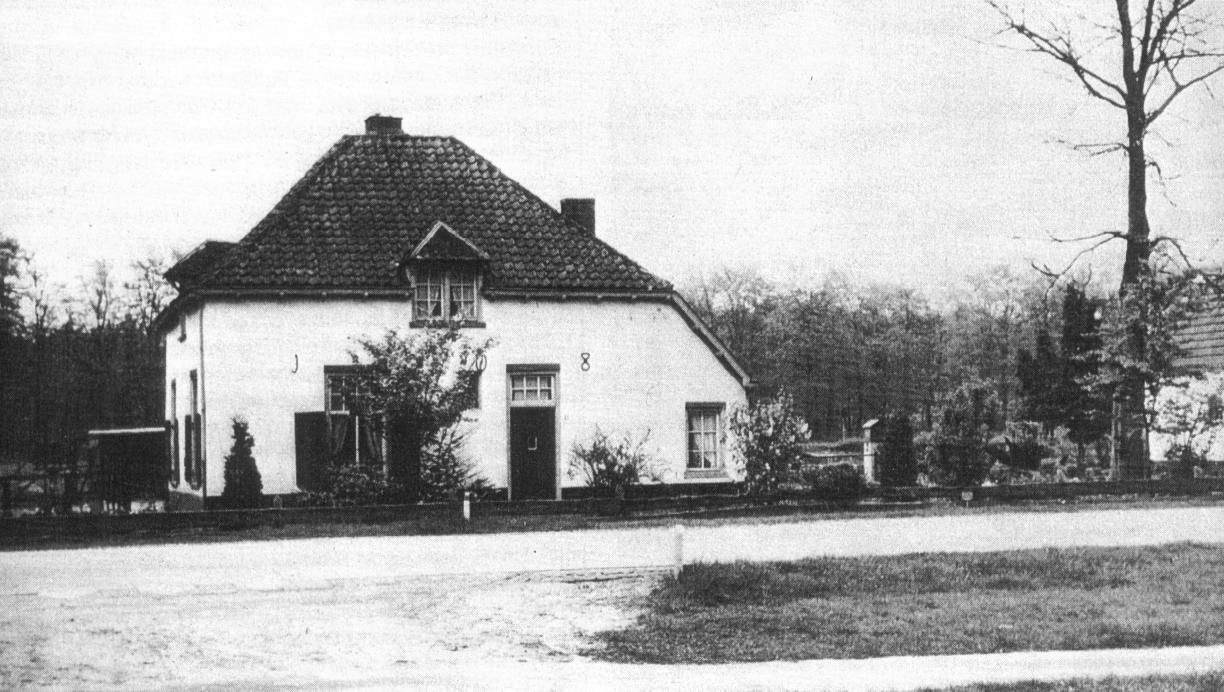
Observation post and 2 prisoners of war
Despite the delay caused by the flares, the Americans reached the intended house that was to serve as an observation post well before dawn. But Sims had second thoughts about the house. The house was deserted. Perhaps there was a house further down the road where Germans lived.
Indeed, the patrol found two sleeping German soldiers in the next house. The Germans were woken up with the announcement that they were prisoners of war. The six men moved into the house. Sims went up to the attic with one of the soldiers to report by radio that they had found a house and that they had taken two prisoners of war. Three soldiers kept an eye on the street while Peter Frank interrogated the two German prisoners of war.
The Germans could not believe that they had been taken prisoner of war, more than six kilometers behind the front. But Sergeant Frank assured them that it was true and that they would be taken that night to the American lines on the south side of the river.
The two Germans said they would be picked up that morning. Sure enough, someone showed up at the door at seven in the morning. But this was the son of the original occupant of the house. Just like Arnhem, the area around Wolfheze was also forcibly evacuated. The son had been given permission to return home to pick up belongings.
The boy had information about German units and positions that Lieutenant Sims immediately radioed to headquarters. The boy was told to stay in the house until the Americans left. Meanwhile, convoys with German trucks and artillery passed by all morning in the direction of Arnhem. Sims also reported this to headquarters via radio.
The number of prisoners of war had already risen to seven. First there was a German who wanted to water his horses in the yard. Then a military postman came by. Then there were two German soldiers who wanted to use the house to avoid their duty for a few hours and finally a German came with a horse and cart to pick up the first two Germans.
Transport
Lieutenant Sims decided at nightfall that seven prisoners of war might be a bit difficult to walk back to the south side of the Rhine. It’s one thing to sneak through enemy lines as a group of six, but with more than a dozen?
While he was being held at gunpoint by the Americans from the side of the road, the German postman was placed on the road with the order to stop a German truck. The first thing that passed by was a whole company of German soldiers on stolen Dutch bicycles.
“Gutenabend,” the German postman shouted as the Germans cycled past.
A little later a German motorcyclist passed by. Without the German postman saying anything, the motorcyclist stopped on his own. He knew the postman with whom he had previously fought in a regiment on the Eastern Front. The motorcyclist was prisoner of war number eight.
Finally, the postman finally stopped a truck. The patrol finally had its transport! But the surprise was great when the Americans opened the tarpaulin at the back of the truck. There were thirteen dozing SS soldiers in the back of the truck.
Lieutenant Sims gave the order to disarm the drowsy SS men and remove the other POWs from the house. Lieutenant Sims and Sergeant Frank sat next to the driver in the cab while the rest of the Americans, along with all the German prisoners of war, crammed into the cargo space of the truck.
The Americans had barely started when they were pinned down by a German Kubelwagen. It featured a German captain who wondered why ‘his’ SS soldiers suddenly drove in the other direction. The German captain and his driver were simply disarmed and placed in the back of the truck as prisoners of war.

Walking further
As they drove towards Arnhem, Sims made it clear to the driver that he should leave the main road and take a path on the right side of the road. The driver did as he was told, but after a few hundred meters the truck got stuck in the mud.
Everyone got out to continue walking. The SS captain saw his chance and ran away. American soldier Bob Nicholai immediately gave chase. Moments later, two shots rang out from Nicholai’s submachine gun. Nicholai returned shortly afterwards with the uninjured SS captain in tow.
Lieutenant Sims lined up the large group of German prisoners of war. He instructed Sergeant Frank to tell the POWs in German that it was a lot easier to shoot them on the spot than to take them to the American lines. He had no intention of shooting the Germans, but that is what he would do if there was another escape attempt or if unnecessary noise was made.
Sims’ words had an effect. There were no more problems for the rest of the trip.
After a few hours the large group reached Renkum. Since daylight was only a few hours away, Sims decided to take the risk of marching straight through the center of the village.
Sims: “The Germans had those boots with studs that made a lot of noise. People would probably think it was just a group of Germans heading to the front lines. You know, when you’re bold, you do much better.”
Once safely through Renkum, there was now one problem: Germans were guarding the riverbank in foxholes between the village and the agreed location along the river. Like alert, well-armed shepherds, the patrol herded the 24 prisoners through a street that led directly to the Lower Rhine.
Lieutenant Sims: “We could see German soldiers there in foxholes at the edge of the river. I ran to one foxhole and without giving an order, two of my men ran to the other two foxholes.”
In this way, another eight Germans were made prisoners of war. The six-man American patrol now numbered 32 prisoners of war.
After Sims signaled the Americans on the south side of the river via light signals, rubber boats were sent to the other side. In total, the boats had to sail back and forth eleven times to transfer all the prisoners of war.
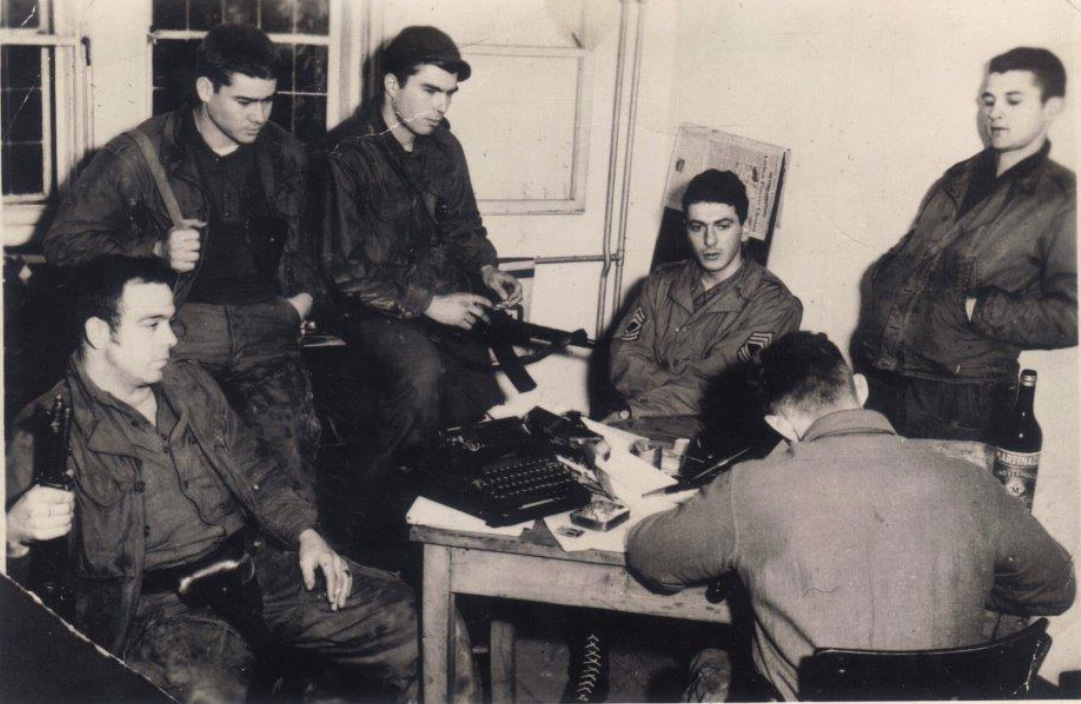
“My congratulations!”
The first compliment Lieutenant Sims received came from the SS captain who had attempted to escape.
“When I realized what you were planning, I didn’t think you would succeed. But you made it happen. My congratulations!”
Lieutenant Sims and his team were showered with praise and admiration upon their return. General Taylor invited Sims to dinner to hear personally about the patrol, and all soldiers who participated were decorated. The highest award went to Sims, who received the Distinguished Service Cross. In addition, he was promoted to captain.
The interrogations of the prisoners of war showed that the Germans no longer had any ambition to drive the Allies away from ‘The island’. The American 101st Airborne Division was then withdrawn to regain strength.
By the time the American public first read about “The Incredible Patrol” in the January 15, 1945, issue of Life magazine, the division had already been in full combat for a month during the Battle of the Bulge.
Hugo Sims survived the war. He later served as a member of the House of Representatives in Washington. Sims died in 2004 at the age of 82.

